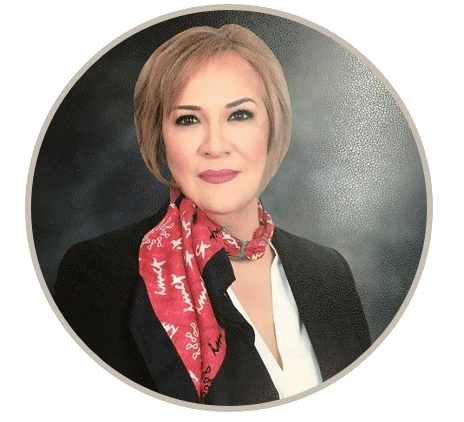-
Financial statements audits
Financial statement audits
-
Compliance audits
Compliance audits
-
Compilations and reviews
Compilations and audit
-
Agreed-upon procedures
Agreed-upon procedures
-
Corporate and business tax
Our trusted teams can prepare corporate tax files and ruling requests, support you with deferrals, accounting procedures and legitimate tax benefits.
-
International tax
Our teams have in-depth knowledge of the relationship between domestic and international tax laws.
-
Tax compliance
Business Tax
-
Individual taxes
Individual taxes
-
Estate and succession planning
Estate and succession planning
-
Global mobility services
Through our global organisation of member firms, we support both companies and individuals, providing insightful solutions to minimise the tax burden for both parties.
-
Sales and use tax and indirect taxes
SUT/ VAT & indirect taxes
-
Tax incentives program
Tax incentives program
-
Transfer Pricing Study
The laws surrounding transfer pricing are becoming ever more complex, as tax affairs of multinational companies are facing scrutiny from media, regulators and the public
-
Business consulting
Our business consulting services can help you improve your operational performance and productivity, adding value throughout your growth life cycle.
-
Forensic and investigative services
At Grant Thornton, we have a wealth of knowledge in forensic services and can support you with issues such as dispute resolution, fraud and insurance claims.
-
Fraud and investigations
The commercial landscape is changing fast. An ever more regulated environment means organizations today must adopt stringent governance and compliance processes. As business has become global, organizations need to adapt to deal with multi-jurisdictional investigations, litigation, and dispute resolution, address the threat of cyber-attack and at the same time protect the organization’s value.
-
Dispute resolutions
Our independent experts are experienced in advising on civil and criminal matters involving contract breaches, partnership disputes, auditor negligence, shareholder disputes and company valuations, disputes for corporates, the public sector and individuals. We act in all forms of dispute resolution, including litigation, arbitration, and mediation.
-
Business risk services
We can help you identify, understand and manage potential risks to safeguard your business and comply with regulatory requirements.
-
Internal audit
We work with our clients to assess their corporate level risk, identify areas of greatest risk and develop appropriate work plans and audit programs to mitigate these risks.
-
Service organization reports
As a service organization, you know how important it is to produce a report for your customers and their auditors that instills confidence and enhances their trust in your services. Grant Thornton Advisory professionals can help you determine which report(s) will satisfy your customers’ needs and provide relevant information to your customers and customers’ auditors that will be a business benefit to you.
-
Transaction advisory services
Transactions are significant events in the life of a business – a successful deal that can have a lasting impact on the future shape of the organizations involved. Because the stakes are high for both buyers and sellers, experience, determination and pragmatism are required to bring deals safely through to conclusion.
-
Mergers and acquisitions
Globalization and company growth ambitions are driving an increase in M&A activity worldwide as businesses look to establish a footprint in countries beyond their own. Even within their own regions, many businesses feel the pressure to acquire in order to establish a strategic presence in new markets, such as those being created by rapid technological innovation.
-
Valuations
We can support you throughout the transaction process – helping achieve the best possible outcome at the point of the transaction and in the longer term.
-
Recovery and reorganization
We provide a wide range of services to recovery and reorganisation professionals, companies and their stakeholders.
 Based on her own experience as partner in charge, tax, at Kevane Grant Thornton in Puerto Rico, María de los A. Rivera believes that removing gender bias at recruitment level helps businesses beat the competition.
Based on her own experience as partner in charge, tax, at Kevane Grant Thornton in Puerto Rico, María de los A. Rivera believes that removing gender bias at recruitment level helps businesses beat the competition.
| What evidence have you seen that diverse teams lead to better business performance? |
|
There are plenty of studies that conclude just that at the global level, but at our local level there are no robust statistics to support that conclusion. However, given our involvement with various organisations that promote gender diversity and inclusion of women, we have seen examples of local businesses, large and small, where their senior level teams are diverse and promote inclusion. These businesses tend to be ahead of their competitors and definitely perform better. Our firm has been an example of this: out of 10 partners, six are women. |
| How do you think talent identification and interview bias can be eliminated to ensure more women are recruited to senior positions? |
|
The two biggest drivers of representation are hiring and promotions, and the 2018 ‘Women in the Workplace’ McKinsey study shows companies are disadvantaging women in these areas from the beginning. This research identified six actions companies need to take to make progress on gender diversity:
Talent identification and interview bias elimination should start with a top-level executive commitment. They should be the champions of diversity. This commitment is put into practice in the HR department. HR leadership should keep up to date with best practices for diverse work environments. Furthermore, firm practices during the recruitment process should ensure that there is no pay gap between compensation packages for equally experienced and capable candidates of different genders. |
| How can female mentors, and visible female business success be made more visible? |
|
We definitely need more of these and need to drive and create more visibility for them. Based on the McKinsey study, women get less access to senior leaders than men do, even though employees who interact regularly with senior leaders are more likely to ask for and receive promotions, stay at their companies, and aspire to be leaders. Substantive and informal interactions between senior leaders and employees can provide visibility both for the female leaders of the organisation, and to women in the organisation. Visibility can be achieved by offering opportunities to women in areas leading to career advancement, and not in areas that do not lead to professional growth (the so-called ‘office housework’). Visibility can be achieved, for instance, by advocating for women in senior management to serve on a board of directors and professional associations. A fair and responsible assignment of tasks across organisations should lead to senior management investing more time in tasks that drives success for them and their organisations. To achieve results in this area, top management must promote cultural change from top to bottom and actually practice what they preach. Tasks must be reviewed and fairly assigned in order to facilitate the participation of women in these activities outside the organisations without creating additional burden to them. |
| How can flexible working practices be used to help retain female talent? What are the most successful policies, in your opinion? |
|
In the past, flexible work arrangements were mostly offered to women. Nowadays, we are seeing more men requesting these agreements, which indicates a shift in household responsibilities, which in turn should help in providing opportunities to women in professions too. A reduced work schedule and flexible hours are the two most successful policies for us in the firm. During the talent interview process, female talent can be successfully retained through an open dialogue about flexible working practices and the firm’s commitment to these practices. |
Additional research: Caroline López, tax manager, Kevane Grant Thornton
Read our Women in business report Return to Champions home page

















